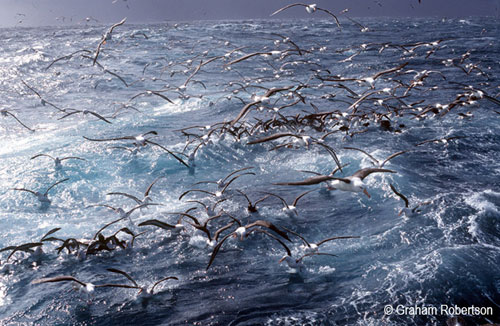South East Atlantic Fisheries Organisation's (SEAFO) Scientific Committee at its 5th Annual Meeting held on 30 September - 2 October 2009 in Swakopmund, Namibia recommended that the current Conservation Measure 05/06: On Reducing Incidental By-catch of Seabirds in the SEAFO Convention Area be revised. Click here for the 2006 version of the measure, which addresses only longlining.
In the light of the latest CCAMLR regulations and information and following advice provided by BirdLife International, the measure was expanded to cover seabird losses in trawl fisheries, following the recent recognition that birds colliding with warp lines can be a significant problem. It was noted that mitigation measures had been applied in South African trawl fisheries as well as in the CCAMLR area.
SEAFO's Commission, meeting over 5-8 October 2009, adopted the revised Conservation Measure on reducing incidental by-catch of seabirds, as recommended by its Scientific Committee. The additional text as it relates to trawling is given below. The complete text of revised Conservation Measure 05/06 may be found on pages 47-51 of the Report of the 6th Annual Meeting of the Commission (click here).
"Trawl gear
10. A streamer (or tori) line shall be deployed outside of both warp cables, the tori lines shall be attached to the stern at the maximum practical height above water line. Back-up tori lines shall be carried by all vessels and be ready for immediate use. Technical specifications for tori lines are given in Appendix B.
11. The dumping of offal is prohibited while gear is being shot or set. The dumping of offal during the hauling of gear shall be avoided.
12. Nets shall be cleaned prior to shooting to remove items that might attract seabirds.
13. Vessels shall adopt shooting and hauling procedures that minimise the time that the net is lying on the surface with the meshes slack. Net maintenance shall, to the extent possible, not be carried out with the net in the water.
14. Each Contracting Party shall encourage their vessels to develop gear configurations that will minimise the chance of birds encountering the part of the net to which they are most vulnerable. This could include increasing the weighting or decreasing the buoyancy of the net so that it sinks faster, or placing coloured streamer or other devices over particular areas of the net where the mesh sizes create a particular danger to birds."

John Cooper, ACAP Information Officer, 6 January 2009

 English
English  Français
Français  Español
Español